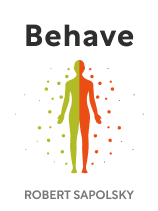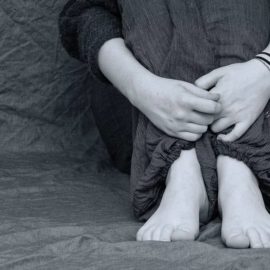

This article is an excerpt from the Shortform book guide to "Behave" by Robert Sapolsky. Shortform has the world's best summaries and analyses of books you should be reading.
Like this article? Sign up for a free trial here .
What is Robert Sapolsky’s Behave about? What is the key message to take away from the book?
Understanding people is crucial to disciplines and careers ranging from psychology to sales. While there are countless books about how to relate to people—and sometimes how to manipulate them—few try to get to the core of human behavior in the same way that Sapolsky’s Behave: The Biology of Humans at Our Best and Worst does.
Below is a brief overview of the key themes.
Nature: Biology and Genetics
We’ll start by examining the “natural” causes of behavior: that is, biology and evolution. First, we’ll discuss the structure of the brain and some of its major functions, then we’ll move on to how hormones influence what we do, and finally we’ll look at some behavioral patterns that have been encoded in us through countless generations of evolution.
In Behave, Sapolsky argues that the nature part of the nature versus nurture debate has less impact than many people believe.
(Shortform note: Many researchers today—including Sapolsky—no longer recognize a clear divide between our genetics and our environments when it comes to behavior. Rather, as we’ll see in this guide, just about everything is the result of interactions between nature and nurture. In other words, there’s no such thing as a gene that forces us to act a certain way. At most, one could say that genes predispose us to certain behaviors.)
The Structure of the Brain
While numerous things influence what we do, the brain is the command center of the body where the final decisions are made. Therefore, the brain’s design and how it works is an ideal place to begin when discussing behavior.
The 3 Levels of the Brain
Sapolsky starts by explaining how the brain works in very general terms. He explains that our thought processes operate in three different “levels”:
1. Top level: neocortex. This is the most recently evolved part of the brain and a feature we share only with our closest animal relatives, the primates. The neocortex is associated with deep thought, reasoning, memory, and processing sensory information. Based on what you’re thinking about, the neocortex sends signals down to the limbic system.
2. Middle level: limbic system. The limbic system is found in all types of mammals, meaning that it evolved earlier than the neocortex. The limbic system is associated with emotions; in more scientific terms, with positive and negative responses to stimuli. Based on those stimuli, the limbic system sends signals to the core regulatory functions.
3. Base level: core regulatory functions. This section controls our most basic and instinctive processes—the things you have little or no control over. For example, if the oxygen levels in your blood fall too low, the reptilian complex will signal you to start breathing more heavily, which is why you start panting when you’re exercising.
(Shortform note: Some sources refer to the base level as the “reptilian complex” (which gives rise to the colloquial “lizard brain”). However, Sapolsky doesn’t use that term in Behave.)
Sapolsky adds that, in some cases, thought processes can skip the neocortex and (more rarely) the limbic system, generating much faster and more instinctive responses.
For example, if you read a recipe, you might think it sounds delicious (neocortex), triggering a positive emotional response (limbic system), sparking feelings of hunger and causing you to salivate (reptilian complex). However, if you see or smell food, it would skip the reasoning step and jump right to the emotional response, followed by the physical one. If you’re starving and your blood sugar is low, that signal would skip straight to the base reptilian complex of your brain and make you feel physically hungry—no logic or emotion needed.
The Amygdala: Fear and Aggression
The amygdala is part of the limbic system, the “middle” level of the brain, and controls our feelings of fear, anxiety, and aggression.
Sapolsky says that our brains will naturally organize people into two groups: “us” and “others” (sometimes you might hear this as “in-group” and “out-group”). We feel positive emotions (pride, empathy, love, and so on) toward people whom we’ve determined are like us, and negative emotions (hatred, fear—emotions controlled by the amygdala) toward those we’ve decided are “others.”
Notably, the amygdala can activate much more quickly than the neocortex, meaning that our fear and hostility response to an “other” is automatic. The logic-based neocortex will then (hopefully) override that response.
To illustrate the point, Sapolsky shares a study where subjects were shown images of people of different races while hooked to a brain scanner. People’s amygdalas would activate upon seeing such an image for just one-tenth of a second—too short a time for the subjects to even identify what they’d just seen, or to consciously feel their response to it. If the image remained onscreen for longer, the frontal cortex would then kick in and soothe the aggressive response.
The Frontal Cortex: Reasoning and Restraint
The frontal cortex is the part of the neocortex at the very front of the brain, and it’s involved in reasoning, conscious decision-making, and self-control. As such, Sapolsky says that the frontal cortex is, more than any other part of the brain, what shapes a person’s personality and choices. In other words, the frontal cortex is what makes us who we are.
Sapolsky also says that the frontal cortex is the last part of the brain to finish developing—in fact, it’s not considered fully developed until a person’s mid-20s. Furthermore, the frontal cortex is shaped by experiences much more so than by genes. These facts have profound implications for the “nature versus nurture” debate: Sapolsky argues that a person’s upbringing has a much greater impact on his or her character than genetics do.
(Shortform note: From adolescence to our mid-20s, countless variables impact how the frontal cortex develops. Since, as Sapolsky says, the frontal cortex is crucial to our decision-making processes, that means that everything from the food we eat, to the air quality where we grow up, to how much sleep we get has a significant impact on who we eventually become.)
Neuroplasticity: Changes in Brain Structure
For all the common talk of nature versus nurture, Sapolsky tells us that nurture can have real and significant impacts on our biology—our nature. For one thing, the brain’s physical structure can change to adapt to various circumstances and stresses. For example, an artist’s brain might have a significantly larger cerebellum than normal (the cerebellum is associated with visualization and fine motor skills). In a sense, your brain behaves like your muscles: The parts you use the most become bigger and stronger.
Furthermore, these physiological changes to the brain can have significant impacts on our behavior. A naturally thoughtful person might develop a stronger neocortex and become even more thoughtful and rational, while an impulsive and emotional person could go in the opposite direction and become even more emotionally driven.
However, the opposite holds true as well: With sustained effort, we can train our brains to strengthen character traits we like and weaken traits we don’t like. As Sapolsky says more than once, environment and experience have greater impacts on our behavior than biology.
Hormones: The Body’s Messengers
While the brain ultimately decides what we’ll do, making those decisions requires input from the entire body. A great deal of that input relies on, or is influenced by, hormones—chemicals that initiate and regulate various functions.
There are dozens of hormones at work within the human body, but Sapolsky focuses on the ones that are especially relevant to behavior—specifically, dopamine, serotonin, oxytocin, and testosterone.
Dopamine and Serotonin: Motivation Molecules
Dopamine is a neurotransmitter that promotes goal-oriented actions; think of it as the “motivation hormone.” Interestingly, Sapolsky says that dopamine is more about the anticipation of a reward than about enjoying the reward itself—in other words, we get dopamine boosts when we work toward a goal, not just when we achieve it.
Serotonin is another neurotransmitter associated with happiness and motivation. Sapolsky says that serotonin works in conjunction with dopamine to enhance its effects, particularly when it comes to long-term goals. Low serotonin is linked with impulsiveness, aggression, and antisocial behavior—though, strangely, high serotonin levels have been found to have the same effects. As with everything about human behavior, Sapolsky says that serotonin’s exact effects depend on numerous other variables, and even the scientists running the studies can’t always say what those variables are.
(Shortform note: Deficiencies in dopamine and serotonin are believed to cause various mental health disorders. For example, some researchers believe that a lack of dopamine causes—or at least contributes to—Attention Deficit Hyperactivity Disorder (ADHD). The dopamine deficiency causes people with ADHD to quickly lose focus on goals, and they have difficulty with emotional regulation. Similarly, many doctors believe that a serotonin deficiency contributes to depression.)
Oxytocin: The “Love Drug”
Oxytocin (and the closely related hormone vasopressin) reduces aggression, increases empathy and trust, and promotes bonding behaviors like physical touch or eye contact. In short, oxytocin and vasopressin cause us to act in a more prosocial way—that is, in ways that are supportive and helpful to others. Furthermore, experiencing prosocial behavior causes us to produce more oxytocin, creating a positive feedback loop.
However, Sapolsky warns that the apparently-positive effects of these hormones greatly depend on context: While oxytocin and vasopressin make us more helpful to people in our in-group, they actually make us more aggressive and suspicious toward those who aren’t. In other words, they strengthen the bonds we already have, but also make us more insular and hostile toward outsiders.
(Shortform note: In addition to making us more aggressive toward “outsiders,” oxytocin can also make us more forgetful. However, oxytocin’s effects on memory—like so many things Sapolsky discusses—seem to be context-dependent. Briefly, the researchers found that people who are more comfortable relying on others scored worse on a memory test after taking oxytocin, while more independent people actually scored better after taking it. The researchers concluded that more study was needed to determine exactly how oxytocin affects memory, and how it interacts with people’s tendencies toward independence.)
Testosterone: Impulsiveness and Confidence
Testosterone increases self-assurance and optimism while decreasing anxiety. It also suppresses part of the neocortex while boosting limbic system activity—in short, it makes you more impulsive and less rational.
Sapolsky says that many people think testosterone causes aggression. However, while there is a correlation between testosterone and aggression, it’s not as strong nor as direct as previously thought. In fact, if anything, it appears to be the other way around: Aggressive behavior leads to testosterone production, rather than high testosterone levels leading to aggressive behavior.
(Shortform note: As people age—especially men—reduced testosterone levels can cause physical and emotional changes. Most notably, people may experience decreased bone and muscle strength, as well as a loss of motivation and a generally depressed mood. Doctors have found that testosterone therapy can reverse some of these effects in aging men. Some men have reported feeling younger and stronger after taking testosterone supplements, but there’s little scientific evidence supporting it as a treatment for those with normal testosterone levels for their age.)
Evolved Behaviors
Our brains and hormones—and all of the “natural” effects on our behaviors—work the way they do because of evolution: Ancestors who behaved in certain ways were more likely to survive and reproduce, passing on the genes that caused them to behave in those ways. So now, many generations later, those genes still survive in us and influence our behavior.
Let’s examine a few broad categories of human behavior closely related to survival and reproduction.
(Shortform note: In The Selfish Gene, Richard Dawkins makes the case that human behaviors are becoming less genetically driven as we continue to evolve. In particular, he believes that our advanced brains—our consciousness—give us the ability to go against our genetically programmed instructions. For example, our genes should compel us to have as many children as we can feasibly raise, but many people choose not to reproduce at all. However, even Dawkins doesn’t think we’ll ever be totally free of genetic imperatives; if nothing else, we’ll always be driven to keep ourselves alive.)
Kin Selection: Protecting Your Family
Kin selection is a term in evolutionary biology that means potentially sacrificing your own welfare or reproductive success in favor of your relatives’—for example, risking your life by fighting off a home intruder to protect your family. It evolved because, by definition, your relatives share many of your genes, so keeping them alive helps pass those genes on.
Sapolsky says that kin selection explains a great number of human behaviors, but that we can also find countless examples of people going against what kin selection should dictate. For instance, we can read news articles about people killing family members, or millionaires donating incredible amounts of money to strangers.
Sapolsky’s theory is that humans do follow kin selection, but the way we decide who our “kin” are isn’t entirely rational. On the one hand, we can look at total strangers and find similarities to ourselves. On the other hand, we can reject even our closest family members if they, for instance, behave in ways we find unacceptable.
Furthermore, we can be manipulated into feeling more or less related to others. Propaganda can paint groups of people as dangerous and monstrous—barely even human, let alone kin. And, conversely, campaigns emphasizing people’s humanity and similarities to us have been crucial in everything from promoting LGBTQ+ rights to raising funds for cancer research.
Reciprocal Altruism: Helping Each Other
A related phenomenon (no pun intended) is reciprocal altruism—the theory that it’s often advantageous for unrelated individuals to work together. To give a common example, grooming behavior is common among animals that live in groups—any member of the group will groom any other member, because making sure nobody’s carrying fleas or ticks benefits the whole group.
Sapolsky says that human society was founded on reciprocal altruism. Hunter-gatherer societies, the earliest known type of human civilization, relied heavily on nonrelatives working together to keep everyone safe and fed. Therefore, reciprocal altruism is in our genes at least as strongly as kin selection is.
Empathy and Compassion
Finally, empathy (echoing another person’s feelings) and compassion (acting to improve another person’s situation) have their place in our behaviors.
On the surface, empathy and compassion don’t seem to follow the same kind of evolutionary logic as kin selection or reciprocal altruism—we don’t seem to benefit from sharing another’s pain, or from acting to alleviate it. However, Sapolsky says that compassionate acts can (and usually do) have selfish aspects to them: A boost to our reputation, a sense of pride in our actions, or just the pleasant rush of dopamine that comes from doing a good deed.
It’s still not totally clear how empathy and compassion evolved, but it seems obvious that helping others is somehow advantageous. One theory Sapolsky favors is that empathy and compassion go hand-in-hand with our evolving brains and cultures: As we get better at reasoning and rational thought, we realize more and more that helping strangers benefits all of us.
(Shortform note: As a partial counterpoint to Sapolsky, many animals show signs of empathy and compassion toward one another. It’s likely that our evolving brains made us better able to rationalize those feelings, and perhaps to foster them where they wouldn’t otherwise exist, but it’s misleading to say that only species with highly developed brains display empathy.)
Nurture: Culture, Family, Environment, and Stimuli
While biology explains internal influences on human behavior, Sapolsky says that external influences—including how we’re raised, where we are at a given moment, and what’s happening around us—are even more important in determining how we act.
Culture: How We’re Raised
Humans, like many other animals, instinctively want to fit in. We want to be part of the in-group, so we obey our culture’s rules, follow its beliefs, and expect others to do the same. Realizing that we’re not matching the people around us can cause serious anxiety—just imagine showing up to a fancy party in jeans and a t-shirt.
Interestingly, studies show that our most deeply held values aren’t things that we consciously think about following. For example, someone who’s been raised to be honest doesn’t decide to tell the truth or overcome the temptation to lie; that temptation never arises in the first place. In other words, you’ll reflexively follow whatever core values you were raised with, unless you make an active effort to do otherwise.
Religion: What We Believe
Throughout history, one of the most influential parts of a person’s upbringing has been his or her religion. Sapolsky says that all religions share a few traits in common, which makes them ideal for understanding cultural effects on behavior:
- Religions are a powerful in-group versus out-group catalyst. Religious communities can offer strong emotional and material support to their members, but they can be hostile—sometimes violently so—toward people who don’t follow that religion.
- Religions teach rules and codes of ethics. These rules often come with promised rewards for following them, and severe punishments (in this life or in the afterlife) for breaking them.
- Believers practice rituals: fixed, familiar behaviors that promote feelings of control, comfort, and belonging. Examples include prayer, meditation, singing and dancing, and coming-of-age ceremonies.
Physical Environment
Sapolsky says people will instinctively act in ways that match their physical surroundings. For instance, people are more likely to commit crimes when evidence of other crimes is present—they might drop their trash on the ground if there are signs of vandalism nearby. In more general terms, people are more likely to violate social and ethical norms if it seems like others have already done so. However, Sapolsky says that the reverse is also true: People are more likely to behave themselves and follow the rules if the environment is clean and orderly.
Our physical environments can also affect us biologically. For example, if you see a dangerous animal, your body will activate genes that cause you to produce adrenaline, so you’ll be ready to fight or run away. Conversely, locking eyes with a child or a pet causes you to produce extra oxytocin, producing feelings of love and kinship.
(Shortform note: Sapolsky mainly discusses the immediate effects of what we can observe around us, but our physical environment affects us in many other, longer-term ways too. For example, certain types of air pollution can cause changes in behavior, mood, and overall health, with effects ranging from irritability to allergies and asthma. Similarly, exposure to heavy metals such as lead can cause increased aggression, fatigue, and memory loss.)
Moral Environment
How close we are to a situation—physically and emotionally—greatly affects how we respond to it. For instance, we might jump into action if we see a child in danger but not feel compelled to act if we read a story about child abuse. Similarly, if we know the child who’s in danger, we’re much more likely to do something about it.
How directly we act upon a situation also changes how we approach it. Notably, people generally consider allowing a bad thing to happen to be much more acceptable than doing a bad thing personally; in Sapolsky’s terms, omission (failing to prevent an act) isn’t as bad as commission (committing the act). For example, I might allow someone else to vandalize a disliked neighbor’s house, even if I would never vandalize it myself.
Finally, as with many things, we aren’t totally rational in our moralizing. People who would never steal physical copies of music albums or video games will happily (and illegally) download them from the internet. The reduced risk of getting caught may explain that to some extent, but there’s also the fact that clicking a download link doesn’t really feel like stealing, and thus pirating feels more acceptable than tucking a CD into your jacket does. There’s also a greater sense of distance—both physical and emotional—between you and the victim: Rather than stealing from a shopkeeper whom you can see and talk to, you’re stealing from an artist who might be on the other side of the world.
Social Environment
Just like our physical environment and moral codes can influence how we behave, so too can the people who are around us. For a clear and easy example, imagine how you act around your best friend compared to how you act around your boss—in most cases, your behavior will be wildly different.
We’ve already discussed the human tendency to divide people into in-groups and out-groups, but we also subdivide our in-groups into ranks—in Sapolsky’s words, we have hierarchies. We tend to feel closer to those who are close in rank to us in those hierarchies. For example, an office worker would likely feel more kinship with his coworkers than with either the company CEO or the janitor.
A hierarchy is different from typical “us versus them” dynamics because all members are still part of the same group, and (at least in theory) all work together for the common good.
Furthermore, Sapolsky points out that the effects of our social environments go beyond influences from people we personally know. For instance, men tend to become more aggressive and take greater risks when women are present. Also, in situations where helping someone would be inconvenient (but not dangerous), the more people there are present, the less likely anyone is to step forward to help—the so-called “Bystander Effect.”
In situations where helping would be dangerous, however, people are actually more likely to step in if there are witnesses nearby. That might be because of the chance to be recognized as a hero, or perhaps simply because it seems more likely that we’ll have backup if things get out of hand.
Responses to Stress
Stress increases amygdala function while suppressing the frontal cortex—in other words, it makes us more prone to reflexive, habitual, and selfish behavior, and less able to regulate that behavior with logic and reason.
Furthermore, Sapolsky says that one of the most effective ways to reduce stress is to behave aggressively toward someone else. For example, someone who’s stressed out at work is more likely to lash out verbally or physically at “safe” targets like a spouse or a child, because that helps relieve the stress. Note that Sapolsky does not excuse this behavior; he’s merely offering a partial explanation of the neurology behind it.
What About Free Will?
This guide has covered numerous factors that influence our behaviors, but at the end of the day, can we still make a conscious choice about what to do? Sapolsky doesn’t think so—he believes that free will is an artificial construct we use to fill the gaps in our understanding of human behavior. If this is right, then, logically, someday we’ll close up all of those gaps and have no more need (or space) for the idea of free will.
While giving up the concept of free will is a disturbing notion, Sapolsky has some thoughts about why doing so would only change things for the better:
Dangerous people will still be arrested and—if needed—punished. Just because it’s not their “fault” doesn’t mean that dangerous people would be allowed to walk around freely. What it does mean is that justice would no longer focus on punishment, except as a means to discourage them from relapsing into their bad behavior. Instead, the focus would be on fixing whatever caused them to act that way in the first place.
(Shortform note: Studies have shown that rehabilitation is more effective—and cheaper—than punishment-focused prison systems. When prisoners receive health care and mental health treatment, learn marketable skills, and have the opportunity for an education, violence rates in prison drop significantly and prisoners are far less likely to reoffend after release.)People would still take credit for their good deeds. While it doesn’t make logical sense for people to feel pride in their actions if they didn’t “choose” those actions, it’s unlikely that we’ll ever completely separate ourselves from our egos. Sapolsky’s hope is that we’ll eventually use our concept of free will for harmless things—for instance, taking pride in your skill at a game, or your taste in clothing—instead of using it as a reason to judge and punish others.

———End of Preview———
Like what you just read? Read the rest of the world's best book summary and analysis of Robert Sapolsky's "Behave" at Shortform .
Here's what you'll find in our full Behave summary :
- An exploration of the myriad influences on human behavior
- A scientific look at why some people do such terrible things
- If there's really such a thing as free will






